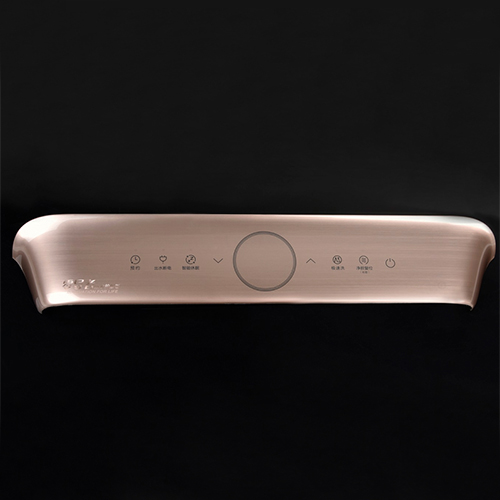In-Mold Decorations: Changing Manufacturing Criteria
Mastering In-Mold Decorations: Approaches, Fads, and Best Practices for Optimal Results
In the realm of manufacturing, the art of in-mold decors stands as an essential facet of product layout and manufacturing. In-Mold Decorations. By diving into the methods, trends, and ideal practices that underpin effective in-mold decoration processes, services can unlock a realm of opportunities that not only raise the visual allure of their items but also streamline production effectiveness and bolster consumer involvement.
Product Option
Product option is an important facet of understanding in-mold designs, as it directly impacts the quality and resilience of the final product. When choosing products for in-mold decors, it is necessary to take into consideration aspects such as compatibility with the molding procedure, the wanted visual result, and the environmental problems the item will face. Thermoplastic materials like polypropylene, abdominal, and polycarbonate are frequently used for in-mold decorations as a result of their adaptability and capacity to accomplish detailed styles. These materials supply exceptional moldability, allowing producers to create complicated shapes and patterns with accuracy.
Moreover, the picked material must possess excellent adhesion residential properties to make certain that the decoration sticks strongly to the substrate during the molding procedure. Attachment in between the decor and the material is vital for preventing delamination and making sure long-lasting visual appeal. Furthermore, products with high warmth resistance are preferred for in-mold decors, especially for products that will be subjected to raised temperature levels throughout their lifecycle. By thoroughly choosing the appropriate product for in-mold decors, suppliers can enhance the overall quality and sturdiness of their items, meeting the expectations of both clients and end-users.
Design Technology
A crucial consider progressing the area of in-mold decors is the continual expedition and execution of design development techniques. Design development plays an essential function in enhancing the aesthetic allure, functionality, and total top quality of items produced using in-mold decor procedures. By including ingenious design components, suppliers can distinguish their products in the market, bring in customers, and stay in advance of competitors.
Among the crucial elements of design development in in-mold decorations is the assimilation of elaborate patterns, textures, and graphics that were formerly challenging to attain with conventional decor approaches. Advanced innovations such as 3D printing and electronic style tools make it possible for designers to develop complicated and detailed styles that can be seamlessly moved onto molded components. Additionally, making use of dynamic shades, metallic surfaces, and unique effects like gloss or matte appearances can even more boost the visual charm of in-mold enhanced items.
In addition, layout technology prolongs past aesthetics to include functional enhancements such as ergonomic forms, integrated functions, and customizable elements that cater to details user requirements. By welcoming layout advancement, manufacturers can unlock brand-new opportunities for personalization, creative thinking, and item distinction in the affordable landscape of in-mold decors.
Manufacturing Performance
Effective production processes are essential for converting the ingenious styles developed in the area of in-mold designs into premium finished items that satisfy market demands and customer assumptions. In the realm of in-mold decorations, manufacturing effectiveness encompasses numerous essential aspects that add to the general success of the manufacturing procedure.
Automation not just from this source increases the manufacturing procedure but also improves precision and repeatability, leading to a more uniform and premium end item. Overall, a holistic method to manufacturing performance is extremely important in optimizing the possibility of in-mold decor strategies and achieving ideal results in the competitive market landscape.
Quality Control Steps
What are the essential methods for making certain stringent quality assurance measures in the world of in-mold decors? Quality assurance procedures are extremely important in in-mold decoration procedures to make certain the manufacturing of top notch and remarkable completed products. One essential technique is the implementation of strenuous examination methods at every stage of the production procedure. This includes conducting comprehensive visual that site inspections, dimensional checks, and shade uniformity analyses to recognize any type of defects or inconsistencies at an early stage.
Making use of advanced innovations such as automated examination systems can likewise boost the quality control procedure by providing trustworthy and precise information for analysis. These systems can discover blemishes that may be missed by hand-operated inspections, consequently boosting overall product high quality and uniformity.

Routine training and growth programs for staff members associated with the in-mold design procedure can also contribute to preserving top quality requirements. By enlightening staff on finest techniques, quality assumptions, and the relevance of attention to detail, business can cultivate a culture of high quality awareness throughout the company.
Consumer Charm
To boost the marketability of in-mold decoration items, recognizing and catering to consumer preferences play a crucial role in identifying their charm and success. Consumer appeal in in-mold designs is influenced by various elements, including design visual appeals, color choices, sturdiness, and general performance. Consumers are progressively looking for customized and special items that mirror their individuality and style. Using personalization options such as individualized layouts, color variants, and textural components can considerably enhance the allure of in-mold design items.

Verdict
In-mold decors offer a effective and versatile way to boost product appearances. Grasping in-mold designs calls for an all natural method that takes into consideration all facets of the production process to ensure success.
In the world of manufacturing, the art of in-mold decorations stands as a pivotal facet of item style and manufacturing. Style development plays an important role More Bonuses in boosting the aesthetic allure, performance, and overall top quality of products manufactured making use of in-mold design procedures.One of the crucial aspects of layout advancement in in-mold decorations is the assimilation of elaborate patterns, appearances, and graphics that were previously challenging to accomplish with conventional decoration techniques.Efficient manufacturing procedures are necessary for translating the ingenious designs created in the field of in-mold decors into high-grade finished items that meet market needs and customer expectations. Using personalization alternatives such as customized layouts, color variations, and textural aspects can significantly boost the appeal of in-mold decor products.